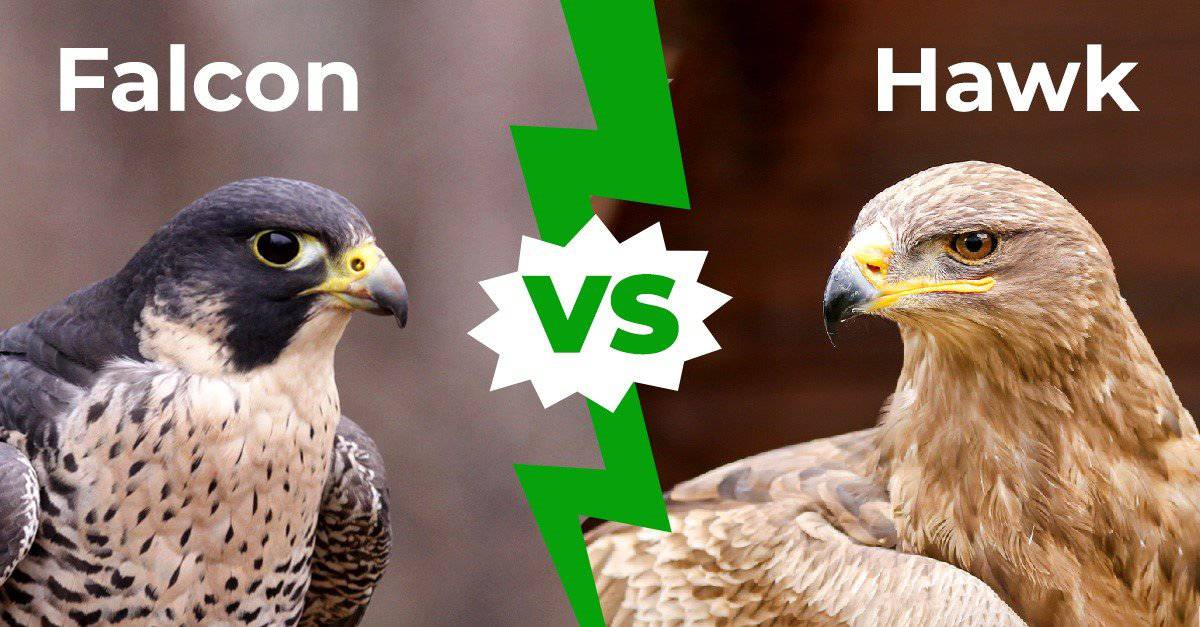Hawks and falcons are both birds of prey. However, you may likely have heard people using the names interchangeably. The reality is that they are two different species of birds. In short, the falcon is smaller than the hawk, but it has a longer wingspan.
Hawks are adaptable but prefer living in the open spaces of North America, Central America, Jamaica, and the West Indies. Falcons live in several countries all over the world. The average lifespan of a falcon is 13 years, while the hawk lives about 20 years.
There is also a confusing difference in names and what they mean in training birds of prey, or raptors. The keeping of any trained captive birds of prey is called falconry, which used to be called “hawking,” and any of the birds of prey in falconry can be called hawks.
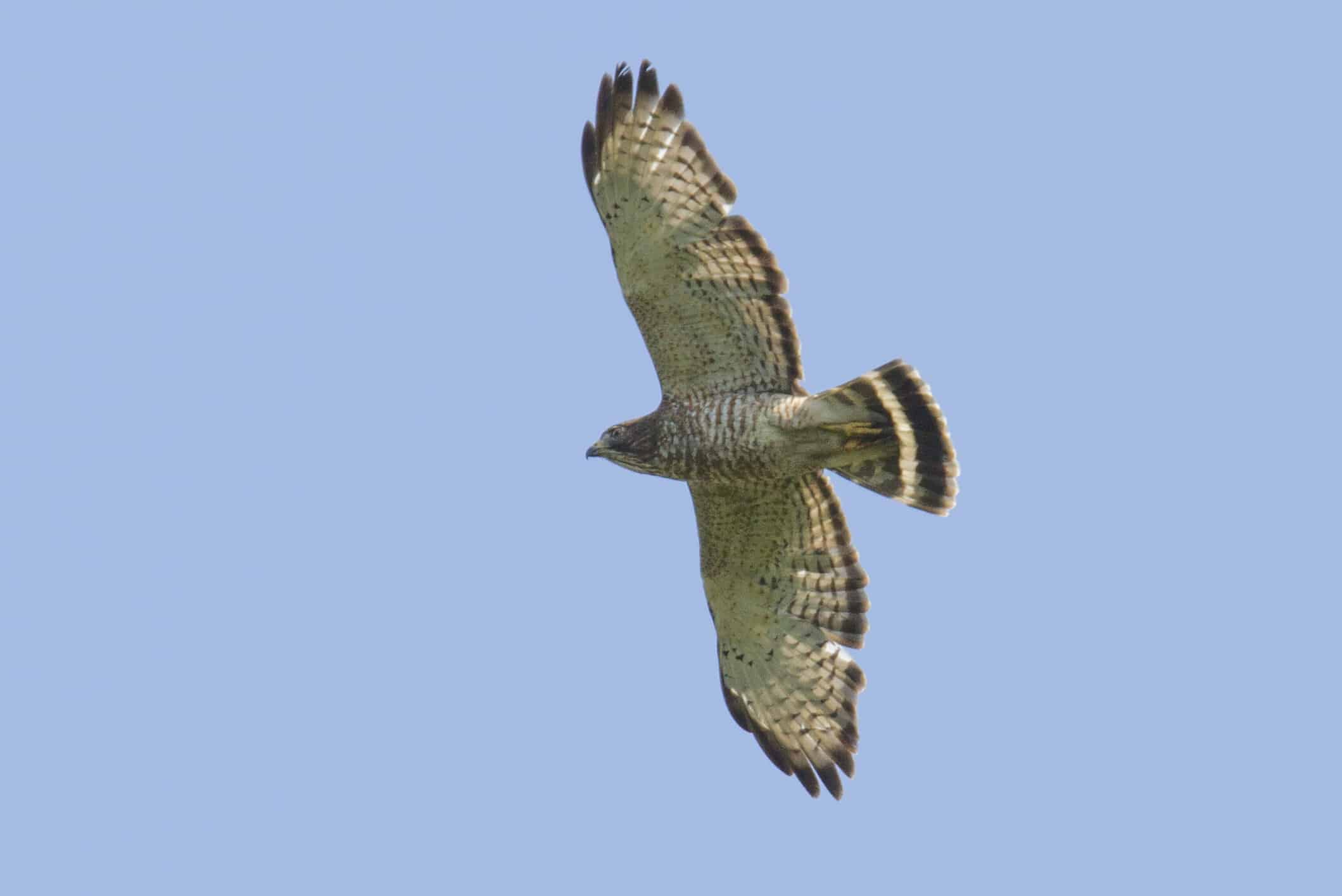
A Broad-winged Hawk in flight with wings and tail spread open.
©iStock.com/lrh847
Why are the birds in the Accipitrine group (most diurnal birds of prey other than falcons) called hawks, but the birds in the Buteo group (broad-winged soaring raptors) are either called hawks, buzzards, or hawk-buzzards depending on where they are?
We’ll see what makes a true hawk or true falcon and the differences between them below!
Comparing Falcon vs Hawk
| Category | Hawk | Falcon |
|---|---|---|
| Size | 18-30in L (large) | 8-26in L (petite to medium) |
| Color | Brownish & greyish plumage, pale, striped underside | Black-barred wings (females), bluish-grey (males) |
| Wings | Wide, rounded, short; wingspan 17-44 in | Pointed, slender, long; wingspan 29-47 |
| Head shape | Smooth, pointy heads | Round, short heads |
| Habitat | Adaptable; woodlands, forests, rural areas, deserts, fields, mountainous plains, tropical areas | Usually open country |
| Taxonomy | Subfamilies Accipitrinae and Buteoninae in family Accipitridae and order Accipitriformes; 2 groups; over 250 species | Genus Falco in subfamily Falconidae, family Falconidae, and order Falconiformes 3-4 groups; 37 species |
| Killing method | Feet and talons | Tooth on beak |
| Diet | Small mammals | Ground vertebrates, smaller birds |
| Nests | High in trees | Tree hollows |
| Flying style | Slow fluttering while flying in circles or brief flapping followed by gliding | Brief, rapid flapping, speed of over 100mph |
8 Key Differences Between Falcon and Hawk
Falcon vs Hawk: Size
By far, the biggest difference between the two birds of prey is their size. Although both have females being larger in size than males, hawks are considered large, measuring anywhere from 8 to 30 inches long, 18 to 30 if you don’t include the smallest species, the sparrow-hawk. Falcons are sometimes petite to medium in length and measure 8 to 26 inches. Other factors such as the age of the bird and species count, too, but generally, hawks are larger than falcons.
Falcon vs Hawk: Color
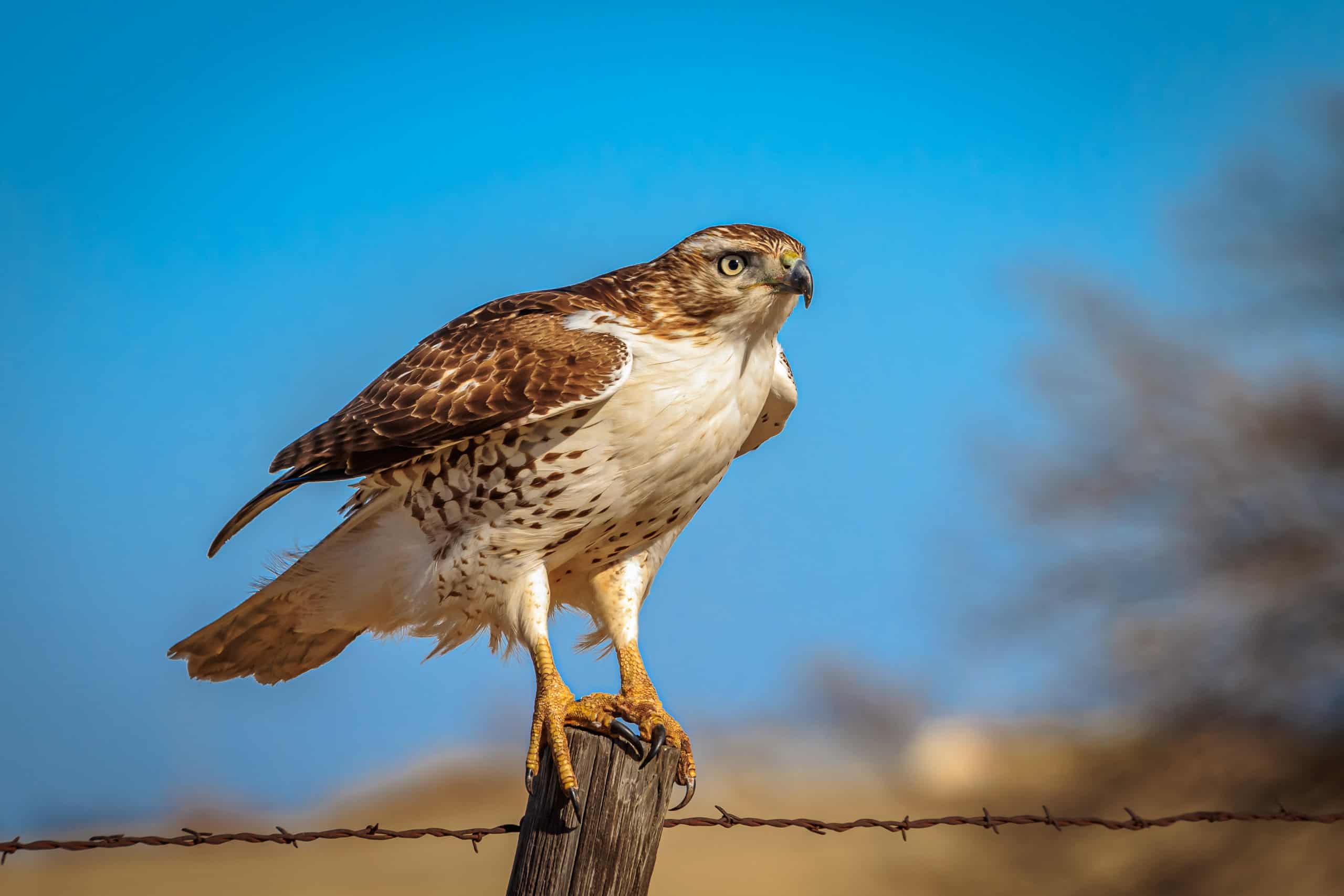
Hawks have greyish and brownish feathers with a pale, striped underside.
©Richard G Smith/Shutterstock.com
Sure, both birds can have similar colors, so how do you tell the difference? The details of their patterns matter, meaning you’ll want to look at their plumage, wings, and undersides. Hawks have greyish and brownish feathers with a pale, striped underside, while falcons are bluish-grey. Also, falcon females have black-barred wings.
There are some other differences based on the species. For example, red-tailed hawks have a brown belly band with white underneath and brown cheeks, and peregrine falcons have a continuous stripe and white cheeks behind malar stripes.
Falcon vs Hawk: Wings

The falcon’s wings are long, slender, and pointed.
Another huge indicator of difference is the unique features of their wings. Even with a quick glance, you can see the hawk’s wings are short, wide, and rounded, and the falcon’s wings are long, slender, and pointed. Some hawk species, including eagles, have separated feathers on the ends, too.
Falcon vs Hawk: Head shape

A Peregrine falcon with blue coloring and a rounded head.
©iStock.com/RamonCarretero
At first glance, you might think the hawk and the falcon have very similar head shapes. And they do until you take a closer look. Examine the outline minus the beak and you’ll see the hawk’s head is slender and pointy, whereas the falcon’s head is round and short.
Falcon vs Hawk: Taxonomy
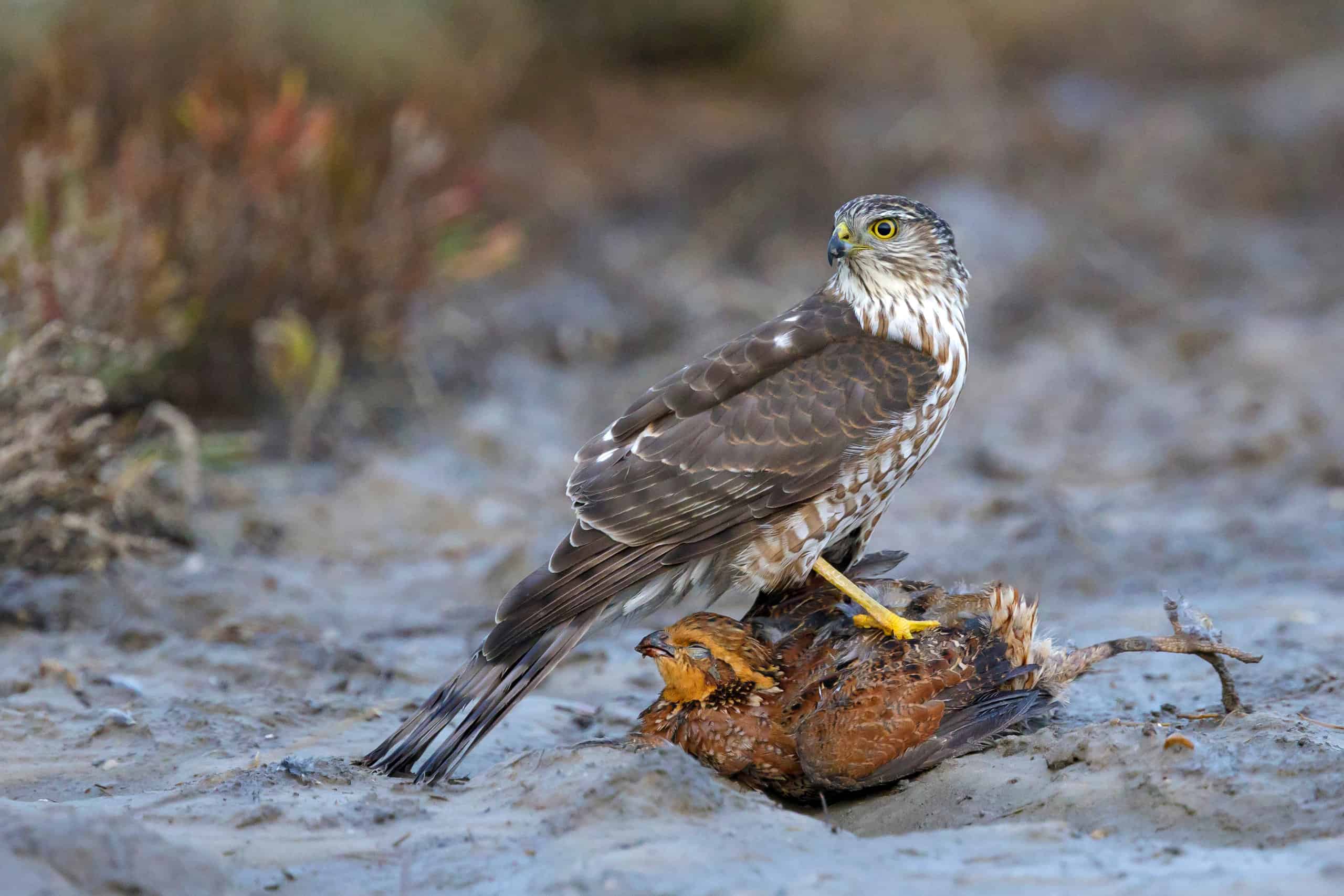
Sharp-shinned hawks impale their prey with their elongated toes with sharp talons.
©Agami Photo Agency/Shutterstock.com
There are two groups of birds that are called hawks: Accipitrine and Buteo. Accipitrine includes sharp-shinned hawks, sparrowhawks, goshawks, buzzards, eagles, kites, and harriers.
Buteo includes birds that are called hawks, buzzards, or hawk-buzzards. For falcons, there are 3 to 4 groups and include kestrels, hobbies, peregrines, and the sometimes separate hierofalcons or hawk-falcons.
Falcon vs Hawk: Killing method
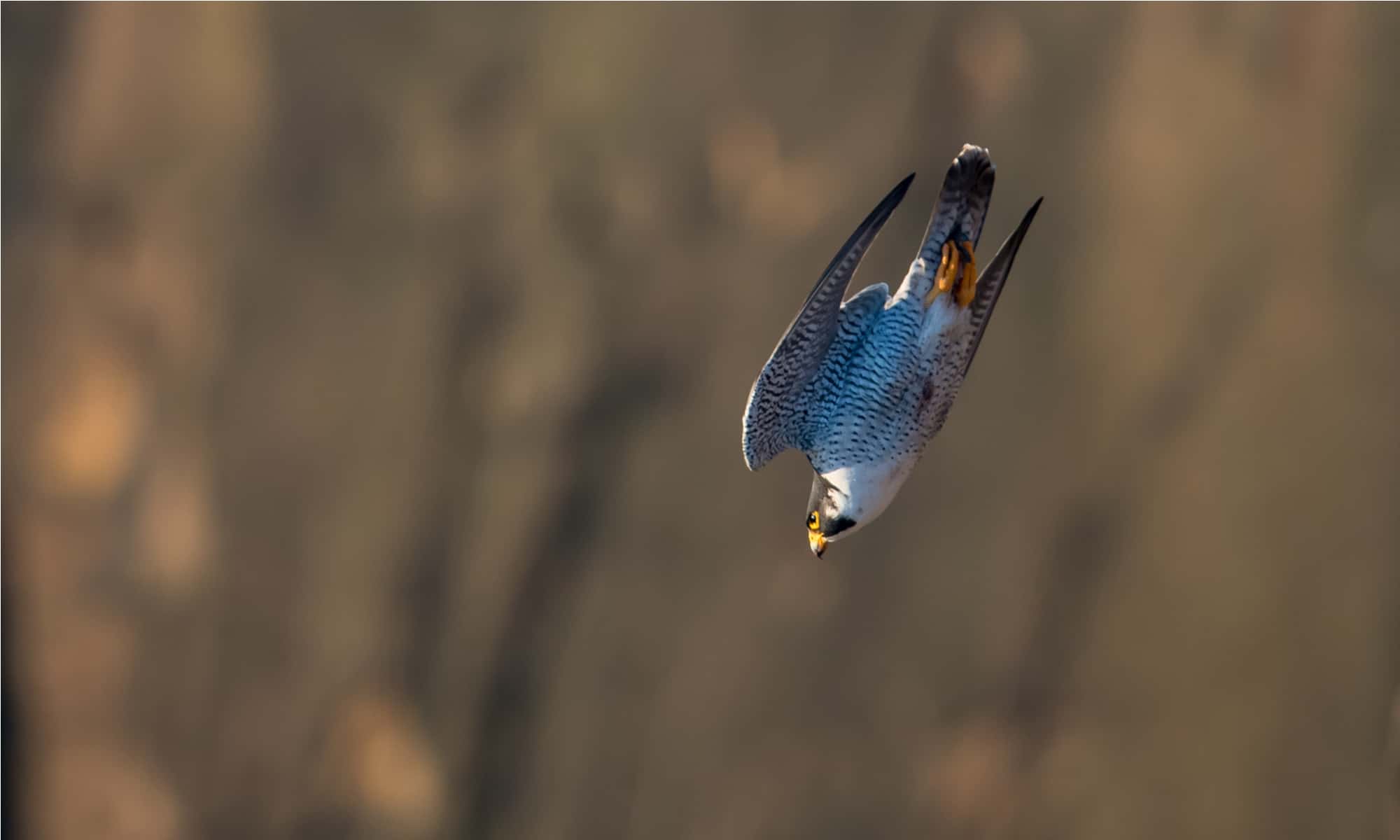
Peregrine Falcon diving for its prey in New Jersey.
©Harry Collins Photography/Shutterstock.com
Both birds of prey catch their prey with their talons, but they have extremely different killing methods when they’re finishing the hunt. Hawks kill with their strong feet and large, sharp talons for tearing, while falcons have a serration or “tooth” on the side of their beaks to deliver the killing blow.
Falcon vs Hawk: Nests
Hawks and falcons have nests that are in completely opposite locations. Hawks build their nests high up, safe from predators. Falcons build their nests in tree hollows, but they’ll readily take to bird boxes ten to thirty feet off the ground.
Examining the type of environment selected can also help determine whether a nest belongs to a falcon or hawk. Hawks normally stick with the tops of very large trees.
Falcons are known for their ability to make homes in trees, but also cliff ledges and human-made structures like ledges of buildings and bridges.
Falcon vs Hawk: Flying style

A Peregrine Falcon flying.
©iStock.com/rancho_runner
The flying styles of the hawk versus that of the falcon reflect how their wings are made for different purposes. The hawk flutters slowly while flying in circles or, alternately, briefly flaps and then glides.
A typical falcon can fly up to 60 miles per hour whereas a hawk does just under 40 miles. A falcon tears prey apart using its beak, while hawks attack using their talons or claws. A falcon’s wings appear long and thin, while a hawk’s wings look wider and rounded out.
The falcon’s wings are best for high-speed stopping and diving, so you’ll see rapid, brief, but powerful flapping, and speeds of over 100 miles per hour, with the peregrine falcon can dive at 180 to 200 miles per hour.
What is the Difference Between Eagles and Hawks?
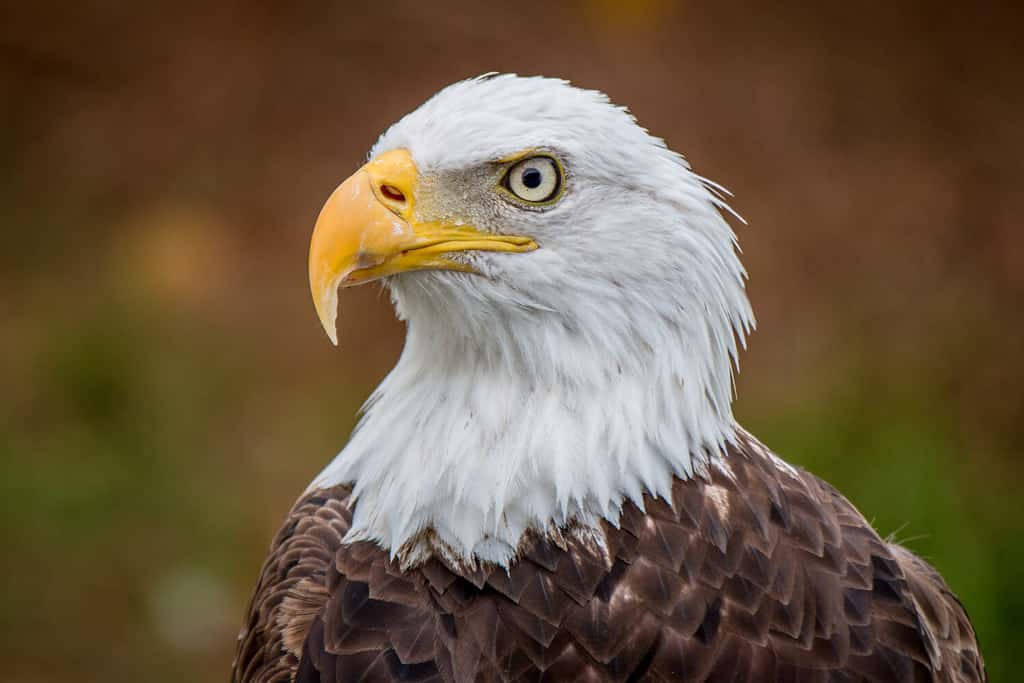
Eagles, hawks, and falcons have many similarities but their differences are worth noting.
©Kevin Tubbergen/Shutterstock.com
When looking at the different types of birds of prey, it can be a little tricky to tell them apart, especially when you find out that hawks and eagles are in the same family (known as Accipitridae)! Moreover, when one of these big birds flies fast overhead, you might not get a good enough glance to tell. There are, however, some pretty good indicators.
First off, the easiest way to determine if a bird is an eagle or hawk is its size. Eagles are actually much larger than hawks. While hawks generally look similar to their cousins, they do not quite have the same body thickness or length of wingspan. Eagles’ wings have a straight, almost plank-style, appearance to their wings. Eagles look a little more leaner overall, too. Lastly, hawks’ feathers have a more rounded shape to their feather tips.
When it comes to flight, there are some differences as well. Eagles will fly and soar on mostly flattened wings, rarely using a raised-wing approach. At times, hawks will incorporate a v-shaped wing pattern into their different flying methods.
Thank you for reading! Have some feedback for us? Contact the AZ Animals editorial team.

